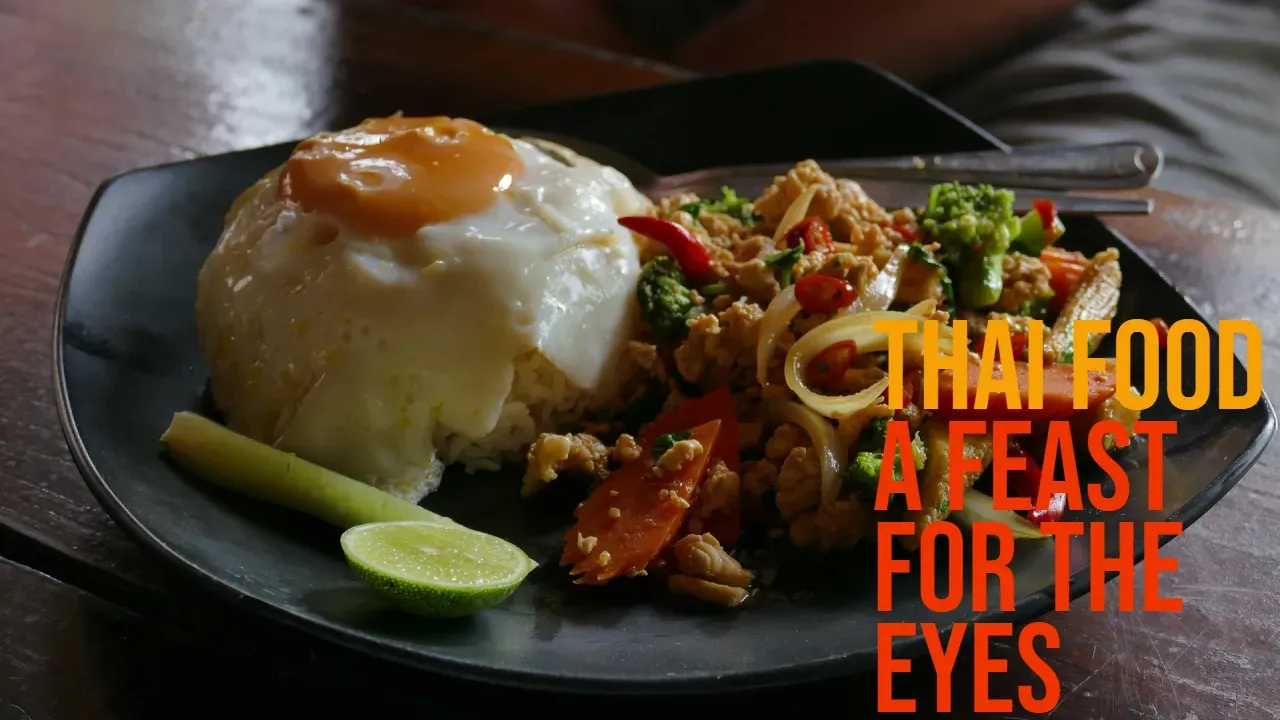Thai Food Culture and Culinary Traditions
If you're looking for a new culinary adventure, look no further than Thai food. This vibrant cuisine is beloved for its bold flavors, unique ingredients, and beautiful presentation. Whether you're a spice lover or prefer milder dishes, Thai food has something for everyone.
Here's why you should add Thai food to your must-try list:
ToC
A Burst of Flavors
Healthy and Nutritious
Thai cuisine is also known for its use of fresh ingredients and healthy cooking techniques. Many Thai dishes feature fresh vegetables, lean proteins, and healthy fats like coconut milk. Traditional Thai cooking methods involve stir-frying, grilling, and steaming, which preserve the nutrients and natural flavors of the ingredients. With plenty of options for vegetarians and vegans, Thai food can be a great addition to a healthy and balanced diet.A Feast for the Eyes
In addition to its bold flavors, Thai cuisine is also known for its beautiful presentation. Each dish is carefully crafted and arranged to be visually stunning. From the colorful curries to the intricately carved fruits, Thai food is a feast for the eyes as well as the taste buds. Eating a (getButton) #color=(#de1738) #text=(Thai meal )is an experience that engages all of the senses.Easy to Customize
Whether you're a spice lover or prefer milder dishes, Thai food is easy to customize to your tastes. Many Thai restaurants offer a range of spice levels, from mild to extra spicy, and can adjust the level of heat to your preference. You can also add or subtract ingredients to suit your taste and dietary needs.How spicy is authentic Thai cuisine?
Authentic Thai cuisine is renowned for its bold and complex flavors, with spice playing a central role in many dishes. Spiciness is a defining characteristic of Thai food and is achieved through the use of fresh chili peppers, dried chili flakes, and spicy condiments like Thai chili paste (nam prik) and chili vinegar.
Thai cuisine employs a unique approach to spiciness, balancing heat with other flavors such as sweetness, sourness, and saltiness. The heat level in Thai dishes can vary widely, ranging from mildly spicy to extremely fiery, depending on the type and amount of chili used.
One of the most famous spicy Thai dishes is Tom Yum Soup, a hot and sour broth flavored with lemongrass, kaffir lime leaves, galangal, and Thai bird's eye chili peppers. This soup packs a punch with its intense heat, making it a favorite among spice enthusiasts. Similarly, dishes like Green Curry, Red Curry, and Panang Curry are known for their spicy flavor profiles, with the heat level customizable to suit individual preferences.
When ordering Thai food, diners can often specify their preferred spice level, ranging from mild to extra spicy. It's essential to communicate with restaurant staff about your spice tolerance to ensure that dishes are prepared to your liking.
In conclusion, Thai food is a must-try cuisine that offers a burst of flavors, healthy options, beautiful presentation, and easy customization. If you're looking for a culinary adventure, give Thai food a try and experience the spice of life.
Are there any vegetarian Thai food options?
Thai cuisine is renowned for its vibrant flavors, aromatic herbs, and diverse range of ingredients. While many Thai dishes feature meat or seafood, vegetarian options are also plentiful and incredibly flavorful. Thai cuisine places a strong emphasis on fresh vegetables, herbs, and spices, making it naturally accommodating for vegetarians.
One of the most popular vegetarian dishes in Thai cuisine is Pad Thai. This iconic stir-fried noodle dish typically includes tofu, eggs, bean sprouts, and peanuts, all cooked in a tangy and slightly sweet tamarind sauce. Another beloved dish is Green Papaya Salad (Som Tum), made with shredded green papaya, cherry tomatoes, peanuts, and a spicy lime dressing. Thai curries such as Green Curry and Massaman Curry can also be made with vegetables and tofu instead of meat, offering a rich and aromatic dining experience.
For those seeking a hearty and comforting meal, Vegetable Tom Yum Soup is an excellent choice. This hot and sour soup is flavored with lemongrass, kaffir lime leaves, galangal, and chili, with an assortment of vegetables adding texture and nutrition. Additionally, dishes like Stir-Fried Morning Glory (Pad Pak Boong) and Thai Basil Tofu (Pad Krapow Tofu) showcase the bold flavors of Thai cuisine without the need for meat.
When dining out at Thai restaurants, vegetarians need to communicate their dietary preferences to ensure that dishes are prepared without fish sauce or shrimp paste, which are common ingredients in Thai cooking. Fortunately, many Thai restaurants are accustomed to catering to vegetarians and can accommodate special requests.
In conclusion, vegetarian options abound in Thai cuisine, offering a wide array of delicious and satisfying dishes that highlight the freshness and vibrancy of plant-based ingredients. With its bold flavors and aromatic herbs, Thai vegetarian cuisine is sure to delight even the most discerning palates.



